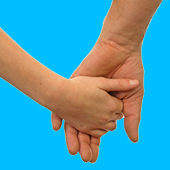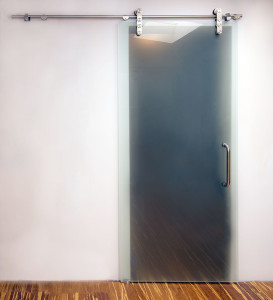Vestibular physical therapy is a specialized treatment designed to help people who experience dizziness and balance issues. This therapy focuses on exercises and techniques aimed at improving your quality of life by addressing the inner ear problems that often lead to dizziness and imbalance. By targeting the vestibular system, therapists can reduce symptoms and enhance stability. Whether your balance issues stem from injury, illness, or age, many individuals find relief through this therapy. Explore vestibular physical therapy and learn how it can help you regain control and confidence in your daily life.
Introduction to Vestibular Physical Therapy
Balance is crucial in our daily lives. It helps us stand, walk, and move with ease. Good balance prevents falls, which can lead to serious injuries. For daily tasks like walking, bending, or turning, balance is essential. However, balance problems can affect your quality of life, making everyday tasks challenging. Vestibular physical therapy helps improve balance and stability, helping you regain the confidence to perform activities you may have once struggled with.
Balance problems can cause fear—fear of falling that limits your activities and makes you feel weaker over time. Vestibular therapy not only restores your balance but also boosts your confidence, leading to increased activity and better strength.
Common Vestibular Disorders
There are several vestibular disorders that can cause dizziness and balance problems:
- Vertigo: A sensation of spinning that often causes dizziness, nausea, and loss of balance.
- Meniere’s Disease: An inner ear disorder that causes vertigo, hearing loss, and tinnitus (ringing in the ears), often accompanied by pressure in the ears.
- Vestibular Neuritis: An inner ear issue that causes sudden and severe vertigo, typically following a cold or flu.
Each of these disorders can be disruptive to your daily life, making it difficult to perform simple tasks.
Symptoms of Vestibular Disorders
Symptoms of vestibular disorders often include dizziness, vertigo, and balance difficulties, especially when moving the head. Other common symptoms include:
- A spinning or lightheaded sensation when moving your head.
- Nausea, sometimes worsening with movement or eating.
- Difficulty walking or standing.
- Weakness in the legs, making it hard to stay balanced.
These symptoms can make daily activities, like cooking, shopping, or even walking, feel dangerous and exhausting.
Diagnosis Process
The diagnostic process for vestibular disorders begins with a thorough medical history review. The doctor will ask about any previous head injuries, ear problems, or dizziness experiences. They will also observe signs of balance issues.
Doctors often conduct a series of balance tests, such as:
- Standing on one leg or walking in a straight line.
- Eye movement tests to check for irregularities in your vestibular system.
In some cases, scans like MRIs or CT scans may be used to get detailed images of the brain and inner ear, helping doctors identify any underlying causes of balance problems.
Principles of Vestibular Physical Therapy
Vestibular therapy aims to help the brain adjust to balance disruptions. The process of adaptation allows the brain to rely on other senses (such as vision and touch) to maintain balance. Therapists guide patients through exercises that help the brain adapt to dizziness and adjust its balance mechanisms.
Some core principles include:
- Habituation: Repeated movements or exercises help the brain ignore dizziness and improve balance over time.
- Substitution: When the vestibular system is compromised, the brain uses other senses (e.g., vision, touch) to compensate for the loss of balance function.
Through regular practice, your brain learns new strategies to maintain balance, making daily tasks easier and improving stability.
Therapeutic Exercises
Vestibular therapy includes a variety of exercises that help improve balance and reduce dizziness:
- Gaze stabilization: This exercise improves coordination between your eyes and head. It involves focusing on a fixed point while moving your head, reducing dizziness and improving balance.
- Balance training: Activities like standing on one foot, walking heel-to-toe, and using balance boards help strengthen the muscles that support your balance.
- Canalith repositioning: This treatment, specifically for benign paroxysmal positional vertigo (BPPV), involves a series of head movements designed to move tiny particles in the inner ear, alleviating vertigo.
These exercises help retrain the vestibular system, allowing you to feel more stable and reduce the risk of falls.
Benefits of Vestibular Physical Therapy
Vestibular physical therapy offers many benefits, including:
- Improved balance: The exercises help strengthen the muscles that keep you stable and coordinated.
- Reduced dizziness: Consistent therapy can significantly lower dizziness levels and help restore confidence.
- Enhanced quality of life: As balance improves, daily activities like walking, shopping, or playing become easier and less stressful.
Patients often report feeling more secure in their daily lives after completing vestibular therapy, with a reduced fear of falling and increased independence.
Tips for Managing Vestibular Disorders
According to Dr. Timothy W. from PhysicalTherapyCoralSprings.com:
In addition to professional therapy, lifestyle adjustments can make a significant difference:
- Healthy eating: Avoiding caffeine and alcohol can help prevent dizziness, while staying hydrated and maintaining a balanced diet supports overall health.
- Regular exercise: Simple home exercises, like standing on one leg or walking in a straight line, can help improve balance and strength.
- Relaxation techniques: Managing stress through relaxation practices can reduce the severity of symptoms.
- Support networks: Connecting with family, friends, and support groups can provide emotional support and valuable tips for managing vestibular disorders.
Success Stories
Many patients have found remarkable improvements through vestibular physical therapy. For example:
- One patient shared, “After therapy, I can walk without fear of falling.”
- Another patient said, “My dizziness is gone, and I can enjoy my hobbies again.”
These stories demonstrate the life-changing benefits of vestibular therapy. Though recovery times may vary, the progress made through consistent therapy can drastically improve confidence, mobility, and quality of life.
Finding a Vestibular Therapist
To find a skilled vestibular therapist, look for:
- Licensing and certifications in vestibular therapy.
- Experience with vestibular disorders and balance issues.
- Personalized treatment plans that address your specific condition.
Your doctor can also provide recommendations, or you can use online directories and health forums to find local therapists. It’s important to ask about their experience and treatment approach to ensure they are the right fit for your needs.
Frequently Asked Questions
What Do Vestibular Physical Therapists Do?
Vestibular physical therapists diagnose and treat dizziness and balance problems. They create customized exercise programs to reduce symptoms and improve balance.
What Are the Best Vestibular Exercises?
The best exercises include head movements, gaze stabilization, balance training, and walking with head turns to improve stability and reduce dizziness.
What Are the Four Components of Vestibular Rehab?
The four components are gaze stabilization, balance training, habituation exercises, and patient education, all of which work together to enhance balance and stability.
What Are the Strategies Used in Vestibular Physical Therapy?
Strategies include balance training, gaze stabilization exercises, habituation, and canalith repositioning maneuvers, each helping to reduce dizziness and improve coordination.
Conclusion
Vestibular physical therapy can help you regain your balance, reduce dizziness, and improve your overall quality of life. With tailored exercises and professional guidance, you can experience better mobility and confidence. Don’t let dizziness control your life—start your journey towards better balance today with vestibular physical therapy. Remember, consistent practice leads to progress, and every step you take brings you closer to feeling secure and stable.
For more information on vestibular conditions, please reach out to FYZICAL Therapy & Balance Center Coral Springs at (954) 779-4549, and located at 2234 N University Dr, Coral Springs, FL 33071

 Did you remember to close the barn door before you left for work today? No, I’m not trying to tell you something in code, I’m telling you something that is hot and trending right now…Sliding barn doors!
Did you remember to close the barn door before you left for work today? No, I’m not trying to tell you something in code, I’m telling you something that is hot and trending right now…Sliding barn doors! There was a point in time where having a glass sliding closet door was only an afterthought. Now we know that sliding doors do not only save up on space but increase the price of home value and keep you up to date on the newest trends in interior design. If you think that talking about one type of closet door is limiting then that only goes to show that you have seen heard nothing about glass sliding doors. One popular design that you will always see in media is glass closet doors with wenge aluminum frames. This does not only give your room a nice rustic feel but also make it looks clutter free!
There was a point in time where having a glass sliding closet door was only an afterthought. Now we know that sliding doors do not only save up on space but increase the price of home value and keep you up to date on the newest trends in interior design. If you think that talking about one type of closet door is limiting then that only goes to show that you have seen heard nothing about glass sliding doors. One popular design that you will always see in media is glass closet doors with wenge aluminum frames. This does not only give your room a nice rustic feel but also make it looks clutter free!